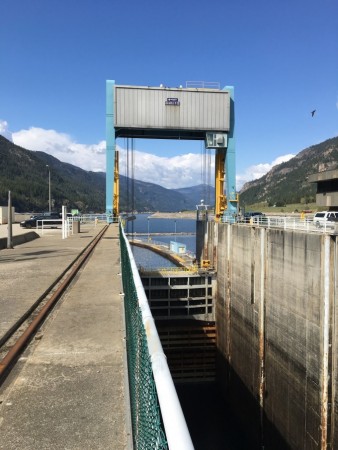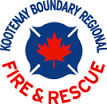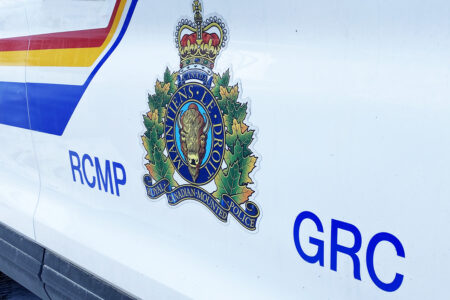City of Castlegar Water Quality Advisory
Effective immediately, City of Castlegar residents serviced by the City’s water system will be under a Water Quality Advisory.
During a Water Quality Advisory, Interior Health and the City recommend that children, the elderly, people with weakened immune systems, and anyone seeking additional protection drink boiled water (brought to a rolling boil for at least one minute) or a safe alternative such as bottled water.
For these at-risk populations, water intended for drinking, washing fruits or vegetables, making beverages or ice, or brushing teeth should be boiled for one minute and then refrigerated in a clean, covered container.
The City believes that as a result of low water levels in Lower Arrow Lake, the water turbidity has exceeded the recommended levels set by Interior Health.
PUBLIC FACILITIES
The City asks that you:
- Display this Water Quality Advisory in common areas;
- Post the Water Quality Advisory at every sink or drinking water fountain accessible to the public; and
- Verbally advise your clientele of Water Quality Advisory as opportunities arise.
In addition, you could turn off sinks or fountains, and provide a safe alternative to tap water (e.g. bottled water).
WHAT IS TURBIDITY?
Turbidity is a measure of how clear or cloudy the water is and “NTU” is the unit it is measured in. Particles can interfere with the disinfection process and may reduce UV & chlorine effectiveness. Turbidity in the good and fair range is invisible to the human eye. The water quality from the Lower Arrow Lake source is typically rated as good. Health risks increase as turbidity rises, particularly for at-risk populations such as children, the elderly, and people with weakened immune systems. Contaminants such as viruses, bacteria, and parasites can attach themselves to the suspended particles in turbid water. These particles can then interfere with disinfection, limiting chlorine’s ability to remove or inactivate the contaminants.
The City is closely monitoring turbidity levels and will advise the public when turbidity levels improve and the Water Quality Advisory is removed. We appreciate your patience while we work to resolve this issue.
BC Hydro offered the following statement about Arrow Lakes levels:
Expected fall water levels for Arrow Lakes Reservoir
Due to continuing severe drought conditions in the Columbia Basin, Arrow Lakes Reservoir levels are currently (September 1, 2023) at 426.9 metres (1,400.6 feet) and may continue to draft between the operating ranges of 426.8 metres (1,400 feet) and 422.1 metres (1,385 feet) by the end of September. While these levels are seasonally lower than average, they are not unexpected during low inflow conditions. Lower fall levels were also observed in the low inflow years of 2015 and 2001. Levels will remain above the Arrow Lakes Reservoir water license minimum level of 420 metres (1,378 feet). At this time, it is expected that the reservoir will continue to draft throughout the fall. Winter conditions will depend on seasonal demand for energy, fall precipitation, and other variables.
The current low levels are due to a combination of low precipitation since last fall, the early depletion of the below average snowpack in May, and the severe drought conditions observed in the Columbia basin this summer. The combination of low inflows and required Columbia River Treaty discharges have resulted in a deeper than normal draft of Arrow Reservoir over this summer. Additionally, discharges from Kinbasket Reservoir that might otherwise keep Arrow higher, have been managed, similar to prior low inflow years, to ensure sufficient winter energy supply for Revelstoke and Mica Generation Stations.
The drought and below average reservoir levels are not unique to Arrow Reservoir. British Columbia collectively is experiencing severe drought levels and unprecedented conditions around the province and most lake levels and river levels are below average. The Government of BC is actively monitoring the situation and working to balance the competing needs within all watersheds. In B.C., drought levels are measured on a 0 to 5 scale (5 is the highest). As of August 24, most of B.C.’s water basins are at Drought Level 4 or 5 including the Upper and Lower Columbia Basins. For more information, please visit: Drought information – Province of British Columbia (gov.bc.ca).
BC Hydro has taken a number of steps to help mitigate the impact of this year’s drought conditions on Arrow Lakes Reservoir, such as negotiating with the U.S. to hold back additional water in the spring which resulted in Arrow Lakes Reservoir being 2.4 meters (8 feet) higher from May to August. We are also carefully balancing discharge from other reservoirs to help offset otherwise deeper drafts at Arrow.
The current Arrow Lakes Reservoir levels are not related to the navigational lock outage or operation of the spillway gates at the Hugh L. Keenleyside Dam. The navigational lock repairs are now complete, and the lock is scheduled to reopen on Saturday, September 2. The navigational lock design allows BC Hydro to safely dewater the lock to complete repairs regardless of the reservoir elevation. The navigation lock is not used for water management or dam safety purposes. Water discharges and reservoir levels remain safely managed with the spillway gates and low-level outlet gates.
Please note that this forecast is subject to change based on a number of factors, including weather, power requirements, inflows, and other variables. Updated information is provided via email every Friday and is also available by calling our toll-free information line at 1-877-924-2444.
In order to address frequently asked questions about this year’s operations, we have prepared an overview of Arrow Lakes Reservoir and the Columbia River system. This document is attached for your reference. We will also continue to keep the public, First Nations, stakeholders, and elected officials from across the Columbia basin informed of our operations and forecast. We understand that these low water levels bring a number of challenges to residents and local businesses. We sincerely appreciate the feedback and concerns you’ve shared with us and encourage you to contact us if you have any questions.
Navigational Lock at the Hugh Keenleyside Dam to reopen on Saturday, September 2
Repairs to the navigational lock at the Hugh L. Keenleyside Dam have now been completed, and the lock will return to service at 8:30 a.m. on Saturday, September 2. We thank you for your patience and support while this work was underway.
Regular hours of operation for the navigational lock are 8:00 a.m. to 4 p.m. Monday through Friday, and 8:30 a.m. to 4 p.m. on the weekends. This service is available at no charge for all properly equipped watercraft. Please note that the last lock cycle begins at 3:30 p.m.
If you have any questions or concerns, please don’t hesitate to contact May Ann Coules directly at 250-365-4565.
























Comments